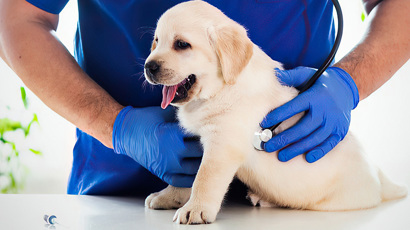Returning to work or school - what's the impact on your pet?

As COVID-19 restrictions start to ease, and we return to work, school or study, we are starting to spend more time away from home. It is essential to know how to help our pets manage this transition, as knowing what to expect supports their emotional health and gives them a sense of control.
Routine, routine, routine.
Our pets thrive on routine. While you are still home, establish predictable times for high-value activities like walks, feeds, rest and playtime. Mealtime is the most anticipated event of the day, so be sure to give meals at roughly the same time. Start creating an exercise routine that you can maintain once you return to work or study.
Things you can do now to help ease separation strain
Just as we may have to wean ourselves off unlimited Netflix access, our pets may have to wean themselves off having us around 24/7. Some cats may embrace this change, but for many dogs, this transition may be tough. Here are some tips to help:
1. Move sleeping beds out of your home office and back to their ‘usual’ spot. Make a comfortable and safe space where your dog is happy to spend time alone. Ensure your dog always has access to clean water and a place to toilet.
2. Identify and then start to desensitise pets to your departure cues. Do you jangle your house keys? Grab your keep cup? Put a backpack on? Dogs are great at piecing together cues which signal your intent to leave. Gradual exposure to these cues can help reduce the anxiety associated with them. So, pick up your keys but sit down and watch TV, put on work shoes and do the ironing, or use your keep cup at home. Over time, your departure cues will become less likely to trigger anxiety.
3. Practice leaving for small periods, and gradually increase time away as your dog gets used to your absence. Start small, just a few minutes, then gradually increase to five minutes, ten minutes, 20, 30 and so on. If you can, interchange time away with your housemates or partner.
Try your best to establish these things now, giving your pet time to settle back in.
And finally, some tips to keep in mind when leaving your dog alone:
- Allow access to the inside of your home if possible, it will make for a calmer pet.
- Make use of boredom busting toys or scatter feeding techniques.
- Rotate toy access. A toy that is left around can soon lose its novelty.
- Find help – consider a dog walker or invest in doggy daycare. Ask a neighbour to dog sit so their dog can enjoy your dog’s company, too.
- Investigate pheromones. Your veterinary clinic sells products that omit soothing pheromones to help make your cat or dog feel calm. Speak to your vet if you think these would be useful.
Good luck! Remember, separation-related issues are not naughty behaviours and should not be disciplined. There are always underlying emotional reasons for our pet’s actions. If you are worried or if your pet is displaying behaviours such as escaping, digging, chewing, toileting inappropriately, pacing or barking, always seek advice from your vet. They will help you decode their behaviour and restore their well-being.



